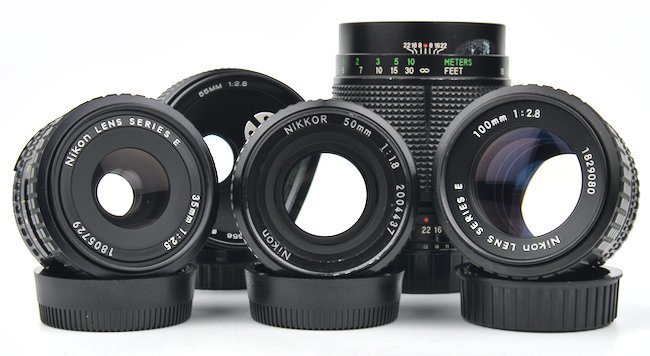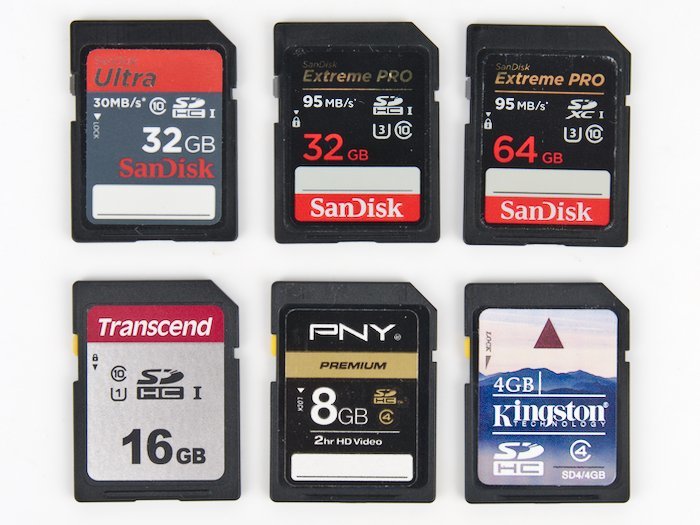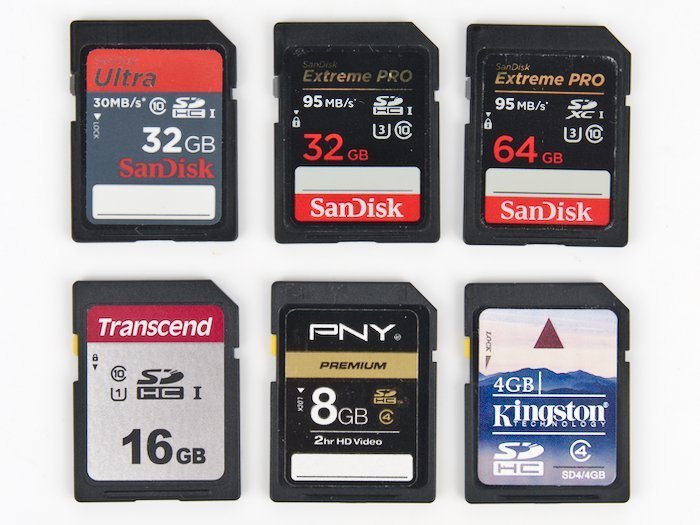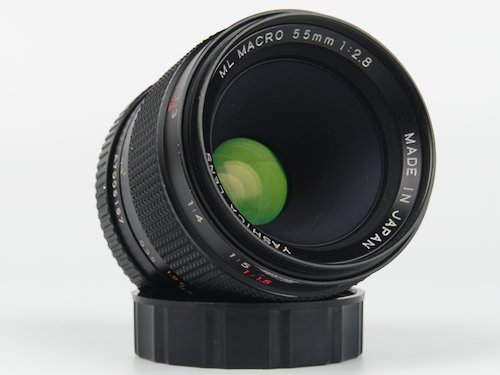
An Expert's Guide to the Best Nikon EM Lenses
- Nathaniel Stephan
- Nikon em
- October 8, 2022
Table of Contents
The Nikon EM is a very good film camera. This webpage will go over the 5 best lenses for the Nikon EM, plus a handful of alternative lenses.
Affiliate Advertising Disclosure
Outside the Shot is a participant in the Amazon Services LLC Associates Program, an affiliate advertising program designed to provide a means for sites to earn advertising fees by advertising and linking to Amazon.com.
As an eBay Partner, I may be compensated if you make a purchase. I also participate in affiliate advertising programs with KEH and Adorama. More can be found on the Affiliate Disclosure page.
Additional details are further down, but if you are limited on time, below is the list:
- Kit Lens - Nikon 50mm f/1.8 Series E
- Wide Angle Lens - Nikon Nikkor 24mm f/2.8 Ai
- Portrait Lens - Nikon 100mm f/2.8 Series E
- Zoom Lens - Vivitar Series 1 70-210mm f/3.5
- Macro Lens - Vivitar 90mm f/2.8
The top Nikon F-mount lenses are categorized by value and area of photography. There are lots of terrific lenses to pick from that are in price ranges appropriate for the value of a EM.
Nikon EM Lens Compatibility
The Nikon EM camera, released in the late ’70s, was designed to be a compact, simple-to-use camera that utilizes the Nikon F-mount lens system. However, newer lenses for digital cameras will not work well. AF-S and G-series lenses lack physical aperture controls and linkage.
Nikon’s Series E lenses, designed around the same time, were made specifically for the EM and are fully compatible.
Non Ai vs Ai & Ai-S Lenses
A Meter Coupling Prong was used on early Nikon F-mount cameras. The Nikon EM uses a Meter Coupling Ridge.
Lenses manufactured around the time when Nikon moved to Ai lenses can have both styles of meter coupling.
Lenses that only have a Meter Coupling Prong will cause damage to your EM if you attempt to use one on the camera.
Manual Focus Lens Basics
While Nikon EM lenses offer manual focus, understanding the basics of focusing manually can be paramount to achieving sharp, compelling images. Here are some tips:
- Understand Your Distance Scale: The numbers on your lens represent the distance (in meters or feet) at which subjects will be in focus.
- Use Your Depth of Field Preview: If your camera has one, the depth of field (DoF) preview button can be an excellent tool for manual focus. It stops down the lens to the set aperture, allowing you to see what will be in focus.
- Practice Focusing: Focusing manually takes practice. The more you do it, the better you will get.
Focal Lengths for Different Types of Photography
Different types of photography often require different focal lengths. Here are some general rules of thumb:
- Landscapes: Wide-angle lenses, typically between 16mm and 35mm, are great for capturing vast landscapes.
- Portraits: Medium telephoto lenses, typically between 85mm and 135mm, help isolate the subject and provide a flattering perspective.
- Sports and Wildlife: Telephoto lenses, typically above 200mm, allow you to get close-up shots from a distance.
- Street Photography: Lenses between 24mm and 50mm often work well for street photography, providing a balance between capturing a scene and maintaining detail.
Standard Prime Lens
The 50mm focal length lens is an excellent choice for a vast array of photography. The types of photography include travel, landscapes, street, architecture, portraits, and everyday use. This is the most popular focal length that is used on the Nikon EM.
Nikon 50mm f/1.8 Series E
https://www.outsidetheshot.com/nikon-f//nikon/nikon-50mm-f18-series-e.jpg does not exist- One of the most popular 50mm lenses Nikon ever made.
- Exceptional value.
- Light, small, and compact.
- 52mm front filter threads.
See current price and more information on:
If you do not already own it, a wonderful lens for the EM is the Nikon 50mm f/1.8 Series E. The 50mm f1.8 is readily available, has nice photo quality, is cheap, compact, and lightweight.
Make sure to purchase the second version of the lens, that has a chrome ring around the body of the lens. It is made of aluminum, whereas the first version has a plastic body.
The 50mm Series E lens is considered a pancake lens because of how thin it is. When mounted on the EM the lens will barely stick out. This is great for keeping the camera under a jacket allowing you to keep a low profile.
Lots of 50mm manual focus lenses were manufactured by Nikon for the F-mount.
Nikon Nikkor 50mm f/1.4
https://www.outsidetheshot.com/nikon-f//nikon/nikon-50mm-f14.jpg does not exist- Outstanding optics.
- Optical multi-coatings to reduce flare.
- Easy to find.
- Comparatively low-priced.
See current price and more information on:
At the added cost of weight and size, the Nikon Nikkor 50mm f/1.4 is 2/3 of a stop faster. It is a little more expensive than any of the f/1.8 or f/2 50mm lenses.
Voigtländer Nokton 58mm f/1.4 SL II AI-S
https://www.outsidetheshot.com/nikon-f//nikon/voigtlander-nokton-58mm-f14-sl.jpg does not exist- Spectacular optics.
- Has a Meter Coupling Prong.
- CPU Contacts.
- Available for purchase new.
See current price and more information on:
Nikon built a 55mm f/1.2 and 50mm f/1.2, but the value is poor. Because of the age of the lenses, you need to be wary of the grease in the focusing helicoid drying up, ruining the experience of using the lens.
The Voightlander 58mm f/1.4 is overall a better choice for a high-end lens. The lens has the smoothest focusing ring| I’ve ever used on a manual focus lens. The Voigtländer is a total delight to use.
In addition, the lens provides compatibility that spans all F-mount cameras. It has a CPU contacts, Ai Meter Coupling Ridge, Meter Coupling Prong, and has a switch to enable electronic control of the aperture. You’re able to seamlessly swap the lens from a Nikon 35mm film SLR to a Nikon DSLR.
Alternative Standard Lenses
Listed below are a few other quality lenses that are comparable choices.
- Nikon Nikkor 50mm f/1.8
- Nikon Nikkor 50mm f/2
- Nikon 35mm f/2.5 Series E
- Nikon 28mm f/2.8 Series E
Wide Angle Lens
Nikon Nikkor 24mm f/2.8
https://www.outsidetheshot.com/nikon-f//nikon/nikon-24mm-f28.jpg does not exist- Great paired with a 50mm lens.
- Optical multi-coatings to improve performance.
- Easy to find.
- Comparatively inexpensive.
See current price and more information on:
A great option for a wide-angle lens is the Nikon Nikkor 24mm f/2.8. It is fantastic for landscape or architectural photography.
There are plenty of wider focal lengths to choose from, but they are frequently are considerably more expensive or have significant amounts of barrel distortion. Third-party lenses have visibly reduced image quality than lenses made by Nikon.
Nikon 28mm f/2.8 Series E
https://www.outsidetheshot.com/nikon-f//nikon/nikon-28mm-f28-series-e.jpg does not exist- Great when used with a 50mm lens.
- Optical multi-coatings to reduce flare.
- Many copies are available.
- Comparatively cheap.
See current price and more information on:
The Nikon 28mm f/2.8 Series E lens is a more affordable option. It is appealing to use with the EM thanks to the low price and ease at which the lens can be found.
Alternative Wide Angle Lenses
In terms of price, the correlation is easy to understand. The wider the field of view, the more expensive the lens will likely be. Faster versions also sell for appreciably more.
- Nikon 8mm f/2.8 Fisheye
- Nikon Nikkor 15mm f/3.5
- Nikon Nikkon 18mm f/3.5
- Nikon Nikkon 24mm f/2
- Nikon Nikkon 13mm f/5.6
- Nikon Nikkon 16mm f/2.8 Fisheye
- Nikon Nikkon 20mm f/2.8
Portrait & Telephoto Lens
Nikon 100mm f/2.8 Series E Lens
https://www.outsidetheshot.com/nikon-f//nikon/nikon-100mm-f28-series-e.jpg does not exist- 85mm substitute.
- Good value.
- Relatively low-priced.
- Many copies are available.
See current price and more information on:
85mm lenses weren’t as commonly used as they are today compared to when the EM was first released in 1979. 100mm or 135mm focal lengths were more common because of their cheaper price.
Just like all of the other Series E lenses mentioned, the 100mm f/2.8 hits a fitting balance of performance, usability, and value. That’s why the lens was very popular when introduced and why a lot of copies are available on the used market.
Nikon Nikkor 135mm f/2.8 Lens
https://www.outsidetheshot.com/nikon-f//nikon/nikon-135mm-f28.jpg does not exist- 85mm substitute.
- "Classic" portraiture rendering.
- Widely available.
See current price and more information on:
The “vintage” look of the Nikkor 135mm f2.8 comes from the focal length in addition to the lens only containing 4 elements.
1965 was the year the initial version of the lens was produced. There are a total of 6 different versions of the lens, with only the last two being compatible with the EM.
If you go to purchase a copy of the lens, the compatible versions will be listed as Ai or Ai-S.
Alternative Telephoto Lenses
There is an abundance of other telephoto lenses to pick from. Lenses longer than 135mm and 85mm lenses will be highly-priced.
| Nikkor 85mm f/2 | Nikkor 105mm f/1.8 |
| Nikkor 105mm f/2.5 | Nikkor 135mm f/2 |
| Nikkor 135mm f/2.8 | Nikon 135mm f/2.8 Series E |
| Nikkor 180mm f/2.8 | Nikkor 200mm f/2 ED |
| Nikkor 300mm f/2 IF-ED | Nikkor 300mm f/2.8 |
| Nikkor 300mm f/4.5 | Nikkor 400mm f/2.8 IF-ED |
| Nikkor 500mm f/4 IF-ED P | Mirror Nikkor 500mm f/8 |
| Nikkor 600mm f/4 IF-ED | Nikkor 800mm f/5.6 IF-ED |
Nikon EM Zoom Lenses
In the early 1980’s, before cameras had autofocus, there were a small number of lenses manufactured by third-party manufacturers that performed better than Nikkor lenses.
A large number of these lenses were released with the Vivitar brand name. Any lens that has the Vivitar Series 1 branding on it is going to have excellent optics.
Vivitar Series 1 70-210mm f/3.5
https://www.outsidetheshot.com/nikon-f//nikon/vivitar-70-210-f35.jpg does not exist- Covers a useful zoom range.
- Great for portrait or wildlife photography.
- A rare example of when a third-party lens is the better choice.
See current price and more information on:
Alternative Zoom Lenses
There are not very many options for zooms for the Nikon EM that have a shorter zoom range. Wear and tear along with age has caused many Nikon zoom lenses to become essentially unusable.
The single zoom lens I would advise looking for is the Vivitar Series 1 VMC 35-85mm f/2.8 (Also found on KEH). Keep in mind, it can be difficult to come across.
Vintage Zoom Lens Problems
The lens that should be the ideal choice, the Nikon Zoom-Nikkor 35-105mm f/3.5-4.5, is regrettably, a push-pull zoom. Instead of a zoom ring that turns, the entire focus ring is pushed or pulled to control the zoom range.
The grease in almost all of these lenses has deteriorated to where the zoom mechanism cannot hold itself up. This means that the lens will have tiny changes in focal length when you attempt to focus. This will be made worse if the lens is pointed up or down.
Nikon Macro Lenses
Komine made both of the two mentioned macro lenses in Japan. The lenses were also released under various brand names. Spiratone, Elicar, Rokunar, Panagor, and Quantaray are brands that also released the lenses.
There is a Vivitar 90mm f/2.8 Macro Lens Review and a Vivitar 55mm f/2.8 Macro Lens Review.
For capturing images at life-size magnification, the 90mm lens will be the better pick since it has a larger working distance.
The 55mm lens is excellent for table-top and close-up photography.
Vivitar 90mm f/2.8
https://www.outsidetheshot.com/nikon-f//nikon/vivitar-90mm-f28-macro-lens.jpg does not exist- The best vintage macro lens I've used.
- Available in a variety lens mounts.
- Excellent value.
See current price and more information on:
Vivitar 55mm f/2.8 Macro Lens
https://www.outsidetheshot.com/nikon-f//nikon/vivitar-55mm-f28-macro-lens.jpg does not exist- My second favorite vintage macro lens.
- A very good lens for close-up photography.
- It doesn't require an extension tube to reach 1:1 magnification.
See current price and more information on:
Alternative Macro Lenses
- Nikon Micro Nikkor 55mm f/3.5
- Lester A Dine 105mm f/2.8
- Micro Nikkor 105mm f/2.8
Used Nikon Camera Lens Prices
The prices of lenses change all the time based on supply and interest in older lenses. Over the past several years, film photography was going through an increase in interest, which has pushed prices higher.
Economic conditions are constantly changing, and sudden changes can quickly lead to changes in prices. Having said that, the difference in lens prices should stay similar.
Check out a few websites to get a good idea of what used prices currently look like. If you’re lucky enough to find a great deal, quickly buy it, because the best deals are short lived.
What Lens Mount Does the Nikon EM Use?
The Nikon EM uses the Nikon F lens mount. Launched in 1959, the F-mount is still in use today. Over time changes have been made to add metering information, autofocus, electronic aperture control, and CPU contacts.
For the EM, you need to use manual focus lenses that are either Ai or Ai-S. The meter coupling ridge on those lenses enables the camera to correctly meter light.
For an explanation F-mount lenses, here is a page that explains Nikon F-mount lens and camera compatibility.
Film for the Nikon EM
The Nikon EM is a 35mm film camera. When choosing film, consider:
- Film Speed (ISO): Lower ISO films (100 or 200) are best for bright light and provide crisp, clear images. Higher ISO films (400 or above) are better for lower light conditions but may result in more grain.
- Color vs. B&W: Consider whether you want your photos in color or black and white. Each offers a different aesthetic.
- Brand: Popular brands like Kodak, Ilford, and Fuji each have their unique characteristics. Experiment to find your favorite.


